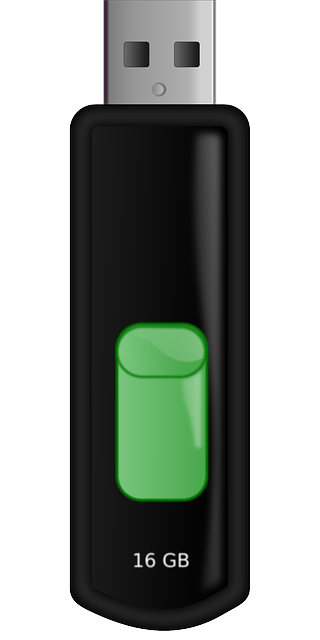What is a Flash Drive?
A flash drive, also known as a USB drive or thumb drive, is a small and portable data storage device.
It is a must-have tool for anyone who needs to store, transfer, or share large amounts of data.
How Does a Flash Drive Work?
A flash drive works by utilizing NAND flash memory technology to store data.
This type of memory is non-volatile, meaning that it retains its stored information even when the power is turned off.
The drive is connected to a computer via a Universal Serial Bus (USB) port and functions just like an external hard drive.
Advantages of Using a Flash Drive
1. Portability
One of the biggest advantages of using a flash drive is its portability.
Flash drives are small and compact, making them easy to carry around and transport.
They can fit into your pocket or attach to your keychain, allowing you to have your important files with you at all times.
2. Capacity
Flash drives come in various storage capacities, ranging from a few gigabytes to terabytes.
With the increasing demand for data storage, flash drives have become more affordable, making it easier to purchase larger capacity drives.
3. Compatibility
Flash drives are compatible with a wide range of devices, including computers, laptops, gaming consoles, and televisions.
This makes them an ideal choice for transferring data between devices, regardless of their operating system or brand.
4. Durability
Flash drives are also known for their durability.
They are less likely to break or become damaged than traditional external hard drives.
This makes them an ideal choice for storing important data that you need to keep safe.
5. Speed
Another advantage of using a flash drive is its speed.
Flash drives have fast read and write speeds, making it easy to transfer large amounts of data in a short amount of time.
Disadvantages of Using a Flash Drive
1. Limited Lifespan
Despite their durability, flash drives do have a limited lifespan.
Over time, the flash memory chips inside the drive can become worn out, causing the drive to fail.
This is why it’s important to backup your data and keep important files stored in multiple locations.
2. Security
Another disadvantage of using a flash drive is that they are not always secure.
If you lose your drive or it gets stolen, anyone can access the data stored on it.
To protect your data, it’s important to use encryption software to secure your flash drive or store sensitive information on an encrypted hard drive.
3. Cost
Although flash drives have become more affordable, they are still more expensive per gigabyte compared to traditional external hard drives.
This can make purchasing a large capacity flash drive a more expensive option for storing your data.
Uses of a Flash Drive
1. File Backup
One of the most common uses of a flash drive is as a backup tool.
You can store important files, such as documents, photos, and videos, on the drive and keep it in a safe place.
This way, if your computer crashes or your hard drive fails, you will still have access to your important files.
2. File Transfer
Flash drives are also commonly used for transferring files between devices.
Whether you need to share a large file with a coworker or transfer files from your computer to your laptop, a flash drive makes it easy to do so.
3. Software Installation
Another use of a flash drive is for installing software on multiple computers.
You can store the installation files on the flash drive and use it to install the software on multiple devices, saving you time and effort.
4. Media Storage
Finally, flash drives can be used as a portable media storage device.
You can store your music, videos, and photos on the drive and play them on your TV or another device.
This is especially useful for people who travel often and want to bring their entertainment with them.
How to Choose the Right Flash Drive
When choosing a flash drive, there are several factors you need to consider:
1. Capacity
The first factor to consider is capacity.
Flash drives come in various capacities, from a few gigabytes to terabytes.
It’s important to choose a drive with enough storage to meet your needs.
2. Speed
The next factor to consider is speed.
Look for a drive with fast read and write speeds so you can transfer large amounts of data quickly.
3. Compatibility
Ensure that the flash drive is compatible with your device.
Some drives may only work with certain operating systems or devices, so it’s important to check the specifications before purchasing.
4. Durability
Choose a drive that is durable and can withstand daily use.
Look for a drive with a solid design and a protective casing to keep it safe from damage.
5. Security
Consider purchasing a flash drive with built-in security features, such as encryption, to protect your data.
Conclusion
A flash drive is a versatile and convenient data storage device that provides an easy way to store, transfer, and share large amounts of data.
Whether you need to backup important files, transfer data between devices, or bring your entertainment with you, a flash drive can help.
Just make sure to choose the right drive for your needs based on capacity, speed, compatibility, durability, and security.
Overall, flash drives have become an essential tool for both personal and professional use, providing a quick and easy solution for data storage and transfer.
So, if you’re in need of a reliable and portable data storage device, consider investing in a flash drive today.
